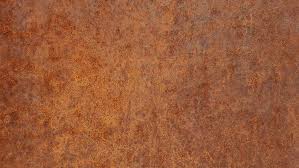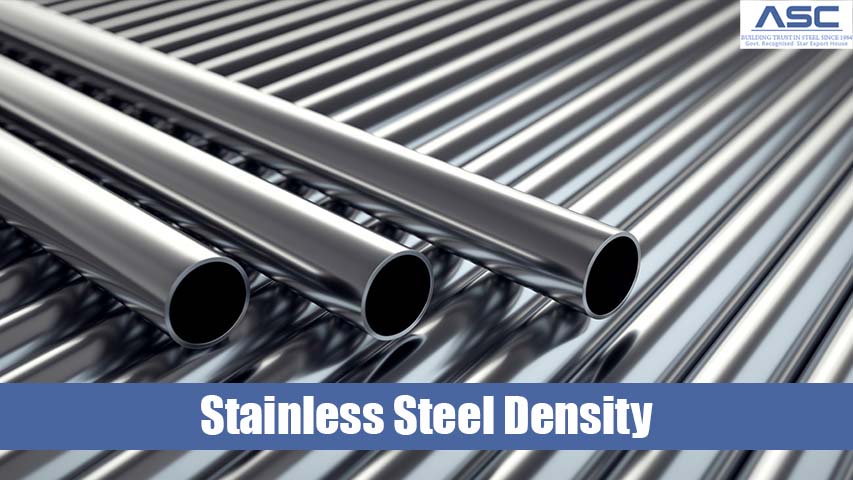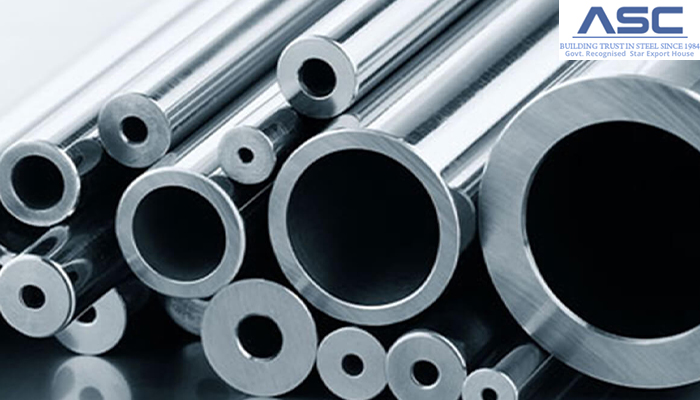Weathering Steel: A Guide to Corten and the A/B Equivalents, Origins & Standards
by AMC
Posted on February 12, 2024 at 03:57 PM

Weathering steel (WS), often referred to as low‐alloy steel, represents a category where the carbon content
is kept below 0.2 wt. %, with key alloying elements including Cu, Cr, Ni, P, Si, and Mn, collectively
constituting no more than 3‐5 wt. %.
The unique chemical composition of these steel alloys is carefully tailored to encourage the early formation
of a rust/iron oxide layer, serving as a natural weather-protective coat for the underlying steel.
The corrosion rate of Weathering steel is remarkably low, enabling bridges constructed from weathering
steel to boast a design life of up to 120 years with minimal maintenance.
In practical terms, weathering steel construction offers an array of advantages, encompassing
reduced overall lifecycle costs and enhanced safety due to the absence of a protective paint system,
leading to reduced inspection cycles. The absence of a paint requirement not only eliminates the
release of volatile organic compounds into the atmosphere but also accelerates the construction process.
Generally, the costs of weathering steel bridges are 5% lower than conventional painted steel alternatives,
considering both initial material cost and maintenance perspectives. Introduced in 1933 with the primary
aim of eliminating the need for painting and other maintenance on ore wagons, this alloy evolves to showcase
a rust-like appearance or patina. This distinctive feature is now highly coveted by architects, gracing
prominent structures such as The John Deere World Headquarters in Illinois and The Angel of the North
monument in the UK. Beyond its aesthetic allure, the patina on Weathering steel not only provides
superior corrosion resistance compared to mild steel but also contributes to its captivating appearance
and inherent self‐healing capabilities. Weathering steel, with its rich history and multifaceted benefits,
continues to shape both the functional and aesthetic aspects of construction projects worldwide.
Chemistry of Weathering Steel
The remarkable corrosion resistance of Weathering Steel (WS) finds its roots in a meticulously
balanced alloy composition. While increased copper and nickel content play pivotal roles, other
alloying elements, including Cr, Mn, and P, contribute their unique strengths to the mix. Copper,
in particular, emerges as a key player, fostering the bond between the protective oxide layer
and the metal, effectively decelerating the corrosion process.
The enchanting aspect of WS lies in its ability to rust deliberately. Unlike conventional steel,
this alloy rusts at a leisurely pace, forming a protective coating that acts as a natural deterrent
against future corrosion. Scientific studies reveal that a rhythmic cycle of wet and dry conditions
is imperative for the optimal formation of a dense and adherent rust layer. Rainwater
plays a crucial role in cleansing the steel surface, allowing accumulated moisture to
drain efficiently, followed by swift drying.
Structures, therefore, need to be devoid of crevices where water could accumulate,
as corrosion in such areas might occur without the formation of the protective patina,
as evidenced by a recent study on motorway bridges in the Czech Republic.
The oxidation journey can span several years before achieving a steady-state ‘stabilisation’ of the
surface, marked by a tightly bonded coating. The pace of this process is intricately tied to the
prevailing atmospheric conditions. The contribution of phosphorus and sulphur to the formation of
the patina layer is noteworthy, with low-solubility sulphates or phosphates developing between the
base steel and existing corrosion, especially when the surface experiences cyclic wet and dry periods.
ISO 9223 suggests that atmospheres with SO2 pollution foster the creation of a more protective rust
layer. While Leygraf and Graedel support this claim, they also caution against excessive non-metal
oxides, which can lead to intense acidification, hindering patina formation. Phosphorus, in addition
to forming a protective passive film over the steel surface, acts as a guardian against aggressive ions
and moisture, supporting the formation of a coherent and dense patina layer. However, the inclusion of
phosphorus may impact the alloy grain structure and mechanical strength of the steel, prompting the
addition of low levels of boron or carbon to restore the necessary grain boundaries. In the alchemical
dance of elements, Weathering Steel reveals its secrets, crafting both resilience and aesthetic allure
through the intricate balance of its chemical composition.
Cor-Ten: Corrosion Resistance and Strength
In the world of weather-resistant steels, Cor-Ten stands as an illustrious maestro. The very name
Cor-Ten encapsulates the two defining features that set it apart from conventional carbon steel (CS):
corrosion resistance (Cor) bestowed by its copper component and exceptional tensile strength (Ten),
showcasing superior mechanical properties. In fact, Cor-Ten proudly boasts a remarkable 30% enhancement
in mechanical properties and a weather resistance capacity 4-8 times greater than traditional CS.
Cor-Ten unfolds in two variations: Cor-Ten A and Cor-Ten B. The ASTM standard designates A 242 for
Cor-Ten A (up to 12.7mm thick), while the newer ASTM grades, A 588, encapsulate Cor-Ten B (over 12.7mm
thickness). Welding Cor-Ten demands precision, with options ranging from gas shield to spot or submerged
arc welding, tailored to the steel's thickness. A meticulous approach is crucial to ensure that the
welding method allows the rusting process to mirror the natural evolution of the entire structure.
While Cor-Ten A and B share similarities, the former tends to have a higher phosphorus content for
an added layer of corrosion resistance, enhancing its durability against the elements. In the grand
symphony of steel, Cor-Ten harmonizes corrosion resilience with formidable strength, creating a
masterpiece that weathers the tests of time.
| Grade | C [%] | Si [%] | Mn [%] | P [%] | S [%] | AI [%] | Cu [%] | Cr [%] | Ni [%] |
|---|---|---|---|---|---|---|---|---|---|
| Corten A | 0.12 | 0.25/0.75 | 0.20/0.50 | 0.07/0.15 | 0.030 | 0.015/0.06 | 0.25/0.55 | 0.50/1.25 | 0.65 |
| Grade | Thickness (mm) Strip Products | Plate Products | Yield Strength RelN/mm² Minimum |
Tensile Strength RmN/mm² Minimum |
Elongation Aso% Minimum |
|---|---|---|---|---|---|
| Corten A | 2-12 | 6-12 | 345 | 485 | 20 |
| Grade | C [%] | Si [%] | Mn [%] | P [%] | S [%] | AI [%] | Cu [%] | V [%] | Cr [%] | Ni [%] |
|---|---|---|---|---|---|---|---|---|---|---|
| Corten B | 0.19 | 0.30/0.65 | 0.80/1.25 | 0.035 | 0.030 | 0.02/0.06 | 0.25/0.40 | 0.02/0.1 | 0.40/0.65 | 0.40 |
| Grade | Thickness (mm) Strip Products | Plate Products | Yield Strength Rel N/mm² Minimum |
Tensile StrengthRm N/mm² Minimum |
Elongation A50 % Minimum |
|---|---|---|---|---|---|
| Corten B | 2 – 13 | 6 – 40 | 345 | 485 | 19 |
PATINAX
In the world of weathering steels, European EN 10025 specifications unfold as
counterparts to the familiar tunes of Cor-Ten and PATINAX, showcasing similarity
in both corrosion resistance and mechanical properties [7]. Cor-Ten A and PATINAX
355P align seamlessly with EN 10025 S355 J0WP, sharing a comparable phosphorus
content (Cor-Ten A at 0.20% vs. S355 J0WP and PATINAX at 0.15%), fostering heightened
corrosion resistance. On the other side of the spectrum, Corten B and PATINAX 355 take
the stage as counterparts to European specifications EN 10025 S355 J2W and EN 10025 S355
J2W+N, each echoing similar tolerances of vanadium, copper, manganese, aluminum, and chromium.
Yet, the performance nuances emerge in the dance of alloying elements. For EN 10025
S355 J2W+N and PATINAX 355, a quest for a finer grain structure prompts the inclusion
of a diverse set of nitrogen-binding elements in the steel composition (e.g., ≥0.02%
Aluminum, Nb 0.015-0.060%, V 0.02-0.12%, Ti 0.02-0.10%). In this symphony of equivalence,
European standard weathering steels resonate with the corrosion-resistant melodies and
mechanical harmonies of their global counterparts.
| Grade | Max. plate thickness [mm] | Grade acc. to EN 10025-5 | Alloying elements | Re, min [MPa] | Rm [MPa] | Amin [%] | T27 [°C] |
|---|---|---|---|---|---|---|---|
| PATINAX 355P | 12.5 | S355J2WP+N | Cr Cu P | 355 | 470-630 | 20 | -20 |
| PATINAX 355 | 50 | S355J2W+N | Cr Cu | 355 (t≤ 16mm) | 470-630 | 20 | -20 |
Composition of PATINAX 355P
| C | Si | Mn | P | S | Cr | Cu | Ni |
|---|---|---|---|---|---|---|---|
| ≤0.12 | 0.25 - 0.75 | 0.20 - 0.50 | 0.07 - 0.15 | ≤ 0.030 | 0.50 - 1.25 | 0.25 - 0.55 | ≤ 0.65 |
| Steel Grade | Minimum yield point ReH MPa *) | Tensile strength Rm MPa | Minimum elongation A (Lo =5.65√So) % |
|---|---|---|---|
| PANTINAX 355P | 355 | 470 -630 | 20 |
| Steel Grade | Minimum yield point ReH MPa *) | Tensile strength Rm MPa | Minimum elongation A % |
|---|---|---|---|
| PATINAX 275PK | 275 | 410 | 25 |
|
Weathering fine grain structural steel Heavy plates |
Steel grade | Material No. | Material Specification 532 July 2014 | |
|---|---|---|---|---|
| TKSE-Short name | EN-Short name | |||
| PATINAX 355 | S355J2W+N | .8965 | ||
PATINAX 355
| C | Si | Mn | P | S | Cr | Cu | V | Ni |
|---|---|---|---|---|---|---|---|---|
| ≤ 0.16 | 0.30 - 0.50 | 0.80 - 1.25 | ≤ 0.030 | ≤ 0.030 | 0.40 - 0.65 | 0.25 - 0.40 | 0.02 - 0.10 | ≤ 0.40 |
| Material thickness mm |
Minimum yield point ReH MPa*) |
Tensile strength Rm MPa |
Minimum elongation A (Lo =5.65√So) % |
|---|---|---|---|
| ≤ 16 | 355 | 470 - 630 | 20 |
| > 16 ≤ 50 | 345 |
European Standard Weathering Steels
In the world of weathering steels, European EN 10025 specifications unfold as counterparts
to the familiar tunes of Cor-Ten and PATINAX, showcasing similarity in both corrosion
resistance and mechanical properties [7]. Cor-Ten A and PATINAX 355P align seamlessly
with EN 10025 S355 J0WP, sharing a comparable phosphorus content (Cor-Ten A at 0.20% vs.
S355 J0WP and PATINAX at 0.15%), fostering heightened corrosion resistance. On the other
side of the spectrum, Corten B and PATINAX 355 take the stage as counterparts to European
specifications EN 10025 S355 J2W and EN 10025 S355 J2W+N, each echoing similar tolerances
of vanadium, copper, manganese, aluminum, and chromium.
Yet, the performance nuances emerge in the dance of alloying elements. For EN 10025 S355
J2W+N and PATINAX 355, a quest for a finer grain structure prompts the inclusion of a
diverse set of nitrogen-binding elements in the steel composition (e.g., ≥0.02% Aluminum,
Nb 0.015-0.060%, V 0.02-0.12%, Ti 0.02-0.10%). In this symphony of equivalence, European
standard weathering steels resonate with the corrosion-resistant melodies and mechanical
harmonies of their global counterparts.
| Thickness Range | |||||||||
|---|---|---|---|---|---|---|---|---|---|
| 0.6mm | 0.8mm | 1mm | 1.2mm | 1.5mm | 1.7mm | 2mm | 2.5mm | 3mm | |
| Corten A | x | x | x | x | x | x | x | x | x |
| Corten B | x | ||||||||
| S355JOWP | x | x | x | ||||||
| S355JOW | x | ||||||||
| S355J2W+N | x | x | |||||||
| S355J2WP+N | |||||||||
| PATINAX 355P | x | ||||||||
| Thickness Range | |||||||||
|---|---|---|---|---|---|---|---|---|---|
| 4mm | 5mm | 6mm | 7mm | 8mm | 9mm | 10mm | 12mm | 14mm | |
| Corten A | x | x | x | x | x | x | x | ||
| Corten B | x | x | x | x | x | x | x | ||
| S355JOWP | x | x | x | x | x | x | x | ||
| S355JOW | x | x | |||||||
| S355J2W+N | x | x | x | x | x | x | x | ||
| S355J2WP+N | x | x | |||||||
| PATINAX 355P | x | x | x | x | x | ||||
| Thickness Range | |||||||||||||||||||
|---|---|---|---|---|---|---|---|---|---|---|---|---|---|---|---|---|---|---|---|
| 15mm | 16mm | 18mm | 20mm | 25mm | 30mm | 35mm | 40mm | 50mm | 60mm | ||||||||||
| Corten A | |||||||||||||||||||
| Corten B | x | x | x | x | x | x | x | x | x | x | |||||||||
| S355JOWP | x | ||||||||||||||||||
| S355JOW | |||||||||||||||||||
| S355J2W+N | x | x | x | x | x | x | x | x | x | x | |||||||||
| S355J2WP+N | x | x | x | x | x | x | |||||||||||||
| PATINAX 355P | x | x | x | x | x | x | x | x | x | x | |||||||||
| Corten A | Thickness Range | Available Widths |
|---|---|---|
| 0.6mm to 12mm | 1000mm, 1250mm, 1500mm, 1800mm, 2000mm, 2500mm |
| Corten B | Thickness Range | Available Widths |
|---|---|---|
| 3mm to 60mm | 1000mm, 1250mm, 1500mm, 2000mm, 2500mm, 3000mm |
| S355JOWP | Thickness Range | Available Widths |
|---|---|---|
| 2mm to 15mm | 1000mm, 1140mm, 1250mm, 1310mm, 1400mm, 1500mm, 1800mm, 2000mm, 2500mm |
| S355JOW | Thickness Range | Available Widths |
|---|---|---|
| 2.5mm to 7mm | 1400mm, 1500mm, 2000mm |
| S355J2W+N | Thickness Range | Available Widths |
|---|---|---|
| 2.5mm to 60mm | 1000mm, 1100mm, 1250mm, 1500mm, 2000mm, 2500mm, 3000mm |
| S355J2WP+N | Thickness Range | Available Widths |
|---|---|---|
| 12mm to 30mm | 1000mm, 1500mm, 2000mm |
| PATINAX 355P | Thickness Range | Available Widths |
|---|---|---|
| 3mm to 60mm | 1000mm, 1250mm, 1500mm, 2000mm, 2500mm, 3000mm |
Conclusion
For over five decades, weathering steel has stood as a stalwart choice for structural applications, boasting a commendable legacy of integrity and low maintenance. In this robust lineage, notable counterparts such as Cor-Ten, PATINAX, and their European equivalents have graced the market, offering equivalent excellence in corrosion resistance and mechanical/tensile strength. From the architectural grandeur of buildings to the sturdy spans of bridges, these products have consistently delivered the requisite attributes for a diverse array of applications. As the journey of weathering steel continues, its endurance and adaptability mark it as a timeless solution in the realm of structural engineering.

Stainless Steel Density
The term "density" generally refers to the concentration of something within a particular area or space. For example, if we say that an area is densely populated, it means that many people live within that specific region.
.jpg)
